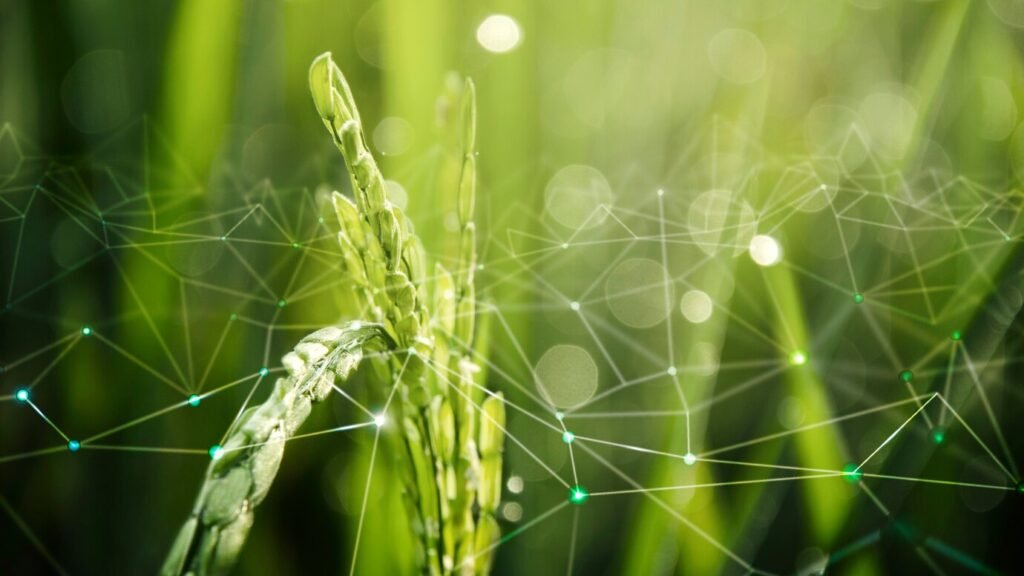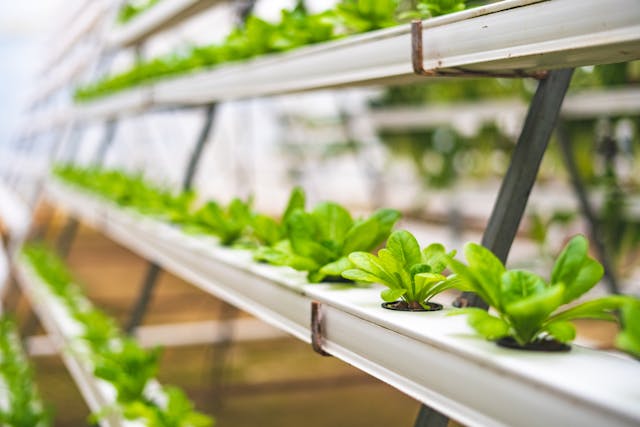On July 28, 2025, scientists at the University of California, Davis announced a breakthrough: using artificial intelligence (AI) to redesign plant receptor molecules so tomato and potato plants could detect a wider array of bacterial invaders. According to the research published in Nature Plants, the AI models analyzed structural patterns of bacterial proteins and generated optimized receptors that trigger stronger immune responses when pathogens strike .
This innovation upgrades plants’ internal alarm systems, teaching them to recognize threats faster and more flexibly than natural evolution allows. The lead author described how the AI‑designed receptors “masked pathogens before symptom onset,” prompting systemic acquired resistance across the plant. In field tests, plants expressing these redesigned receptors showed dramatically reduced disease incidence. According to the source, early trials in greenhouse conditions demonstrated over 60% reduction in bacterial disease symptoms compared to controls.
Real‑world applications are already in motion: potato and tomato breeders are planning field trials this autumn in warmer regions, seeking to scale the results to commercial farming zones. Local agronomists note that adapting such engineered immunity could revolutionize disease management, reducing dependence on chemical treatments and lowering yield loss risks under changing climate patterns.

Proven Models & Real Farmer Stories
Across the globe, AI‑based tools for disease diagnosis and prevention are reshaping farming realities. In Kericho, Kenya, smallholder coffee growers like Sammy Selim and maize growers like Musau Mutisya have embraced free smartphone tools—Virtual Agronomist and PlantVillage—to diagnose disease and pest threats. Selim reported a dramatic jump from 2.3 t/ha to 7.3 t/ha of coffee yield after following AI advice on soil nutrition, almost tripling his harvest.
Mutisya used PlantVillage’s image‑based diagnosis tool to identify fall armyworm and bacterial leaf diseases. “We were doing guesswork in the past,” he told The Guardian. He saves money and reduces pesticide misuse using AI‑guided recommendations.
At a high‑tech farm cluster in India’s Vidarbha region, the government‑led Cluster AI Farming initiative couples soil sensors, disease tracking models, and mobile phone alerts to support groups of 20–25 farmers. At a demonstration sugarcane plot, AI‑based guidance helped farmers achieve a staggering 140 tonnes per acre yield, far above local averages.
Meanwhile, at the Gulf Coast Research and Education Center (GCREC) in Florida, an AI hub is developing robot‑guided UV systems to combat pathogens like powdery mildew in strawberry fields. Researchers report herbicide use reductions of up to 90% thanks to precision AI sprayers under the leadership of Jack Rechcigl. These real field applications underline how AI isn’t just theoretical—farmers across continents are already benefiting.
Cutting‑Edge AI Models and Scientific Insights
Recent scientific studies give us a clearer picture of how AI works hand in hand with plant immunity. A review in Frontiers in Plant Science highlighted that AI can boost strategies like receptor transfer, gene editing, and predictive outbreak modelling to make plants’ natural immune systems stronger across different species.
Another recent review (2025) found AI tools accelerating genomic selection, integrating multi‑omics data, and predicting resistance traits based on large datasets. Researchers are now combining large language models with federated learning to interpret DNA and protein interactions in breeding programs more efficiently.
In parallel, studies of fungal effectors reveal how AI can model complex protein interactions that control plant‑pathogen dynamics. Though early in application, AI‑assisted structural modelling shows promise for deep insights into how fungal pathogens hijack plant machinery.
At the cellular level, scientists from the Salk Institute recently identified special “PRIMER” cells—primary immune responders that act as hubs initiating plant immune reactions. Understanding these via AI‑enabled imaging and transcriptomics helps researchers design more effective immunities in engineered plants.
Algorithmic advances include new deep learning models for disease detection: FourCropNet, a CNN-based system, achieved accuracies around 99% for grape and corn diseases, and mobile‑optimized models like MobilePlantViT yield 80–99% classification accuracy with under 1 million parameters, making them ideal for low‑resource environments.
Finally, Nature Scientific Reports recently introduced AttCM‑Alex, a hybrid transformer‑CNN model robust to lighting variation and background noise, improving disease detection reliability in real farm environments under challenging conditions.
Table: Accuracy of Selected AI Models for Plant Disease Detection
| Model | Crop Types | Accuracy (%) | Notes |
|---|---|---|---|
| FourCropNet | Grape, Corn, Soybean, Cotton | 95–99.7 | Multi‑crop accuracy and generalization |
| MobilePlantViT | Multiple leaf diseases | 80–99 | Lightweight, suitable for smartphones |
| AttCM‑Alex | Field‑collected leaf images | ~98 | Handles lighting noise and variation |
| UAV‑based drone system | Cashew anthracnose | 95 for disease, 99 healthy | Edge‑AI drone detection arXiv |
These models reflect real scientific advances, not just lab demos—they are now powering real tools used in low‑income and commercial agricultural systems alike.
What Farmers and Breeders Should Do Next
For plant breeders, researchers, agronomists, and extension services, the data is compelling. AI‑designed immunity systems, such as those developed at UC Davis, offer routes for real engineering of broader pathogen recognition. Combining AI‑guided receptor design with CRISPR or traditional breeding could fast‑track disease resistance in staple crops. A Wired commentary noted that combining AI and CRISPR in agriculture is already delivering “tangible results,” speeding discovery of heat‑tolerant or disease‑resistant traits in plants.
Farmers can adopt AI‑powered diagnosis apps and sensors today. As seen in Kenya and India, these tools help detect issues early, reduce input waste, and improve yields even with minimal training. Experts recommend starting small: pilot AI tools on one field or farm cluster, monitor results, and gradually expand.
Breeders and researchers should invest in high‑quality, diverse datasets for disease models—variation across lighting, varietal differences, and local diseases is essential to avoid biases and ensure generalizability. Federated learning approaches enable training across distributed farms while maintaining data privacy, a promising approach for broad deployment.
Extension services should combine digital training with on‑farm demonstrations. As seen in Kenya, trained lead‑farmers with smartphones create peer networks and integrate AI tools into existing advisory systems rather than replacing them.
Policy and funding bodies must support infrastructure and accessibility—mobile networks, affordable smartphones, sensor provisioning, and support for indigenous knowledge integration. Some critics warn that AI models often exclude local practices when not designed inclusively; extension efforts must ensure that AI advice complements, not overrides, traditional wisdom.
In closing, AI is not a magic bullet, but it is a powerful ally. When combined with genomics, breeding, on‑farm monitoring, and inclusive farmer engagement, AI can deliver smarter crops with stronger immunity and higher yields.
Actionable Advice
- Trial small-scale AI tools: Farmers can start with free apps such as PlantVillage or Virtual Agronomist to diagnose crop diseases and nutrient stress.
- Partner with breeders: Research institutes and seed companies should explore AI‑designed receptors and CRISPR-guided resistance strategies.
- Build inclusive data pipelines: Ensure AI models are trained on diverse plant varieties and farming contexts to avoid bias.
- Train lead‑farmers: Use a peer‑to‑peer model so smartphone-enabled farmers learn tools and share with neighbours.
- Support infrastructure: Policymakers and NGOs should invest in sensors, connectivity, and training to democratize AI access.







